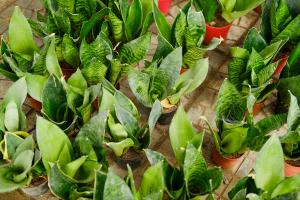How to Prune a Very Tall Rubber Tree Plant
If you have a very tall rubber tree plant, you may be wondering how to prune it to help it maintain its health and shape. Pruning a tall rubber tree requires a little bit of planning and careful attention to detail, but it can be done successfully with the right tools and techniques. Here are some tips on how to prune a very tall rubber tree plant:
Step 1: Assess the Tree's Health
Before you start pruning your rubber tree plant, it is important to assess its overall health. Look for any signs of disease or damage, such as yellowing leaves, brown spots, or broken branches. If you notice any problems, you may need to address these issues before pruning your tree to prevent further damage.
Step 2: Choose the Right Pruning Tools
To prune a tall rubber tree plant, you will need the right tools for the job. You will need a pair of sharp pruning shears or loppers that can easily cut through the rubbery branches. Make sure that your tools are clean and disinfected to prevent the spread of disease between plants.
Step 3: Decide on Your Pruning Goals
Before you start pruning your rubber tree, you should have a clear idea of your pruning goals. Do you want to shape the tree, reduce its size, or remove any dead or damaged branches? By setting specific goals, you can prune your tree more effectively and avoid over-pruning or under-pruning.
Step 4: Prune Carefully from the Bottom Up
When pruning a very tall rubber tree, it is best to start at the bottom and work your way up. Remove any dead, damaged, or diseased branches first. Next, focus on removing any branches that are crossing or rubbing against each other, as this can cause damage to the tree's bark. Finally, if you are trying to reduce the overall size of your tree, you can selectively remove some of the top branches.
Step 5: Watch for New Growth
After pruning your rubber tree, it is important to keep an eye on it for any signs of new growth. If you notice new leaves or branches forming, this is a good sign that your tree is recovering well from pruning. If you do not see any new growth within a few weeks, you may need to take additional steps to help your tree recover, such as fertilizing or watering it more frequently.
Conclusion
Pruning a very tall rubber tree plant may seem intimidating, but it can be done successfully with a little bit of planning and care. By assessing your tree's health, choosing the right tools, setting clear pruning goals, and pruning carefully from the bottom up, you can help your rubber tree maintain its health and shape for years to come.

 how many times do yo...
how many times do yo... how many planted tre...
how many planted tre... how many pine trees ...
how many pine trees ... how many pecan trees...
how many pecan trees... how many plants comp...
how many plants comp... how many plants can ...
how many plants can ... how many plants and ...
how many plants and ... how many pepper plan...
how many pepper plan...































